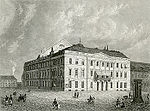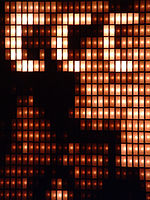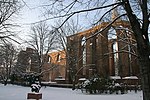Alexa Centre
Buildings and structures in BerlinEconomy of BerlinGermany stubsMitteShopping mall stubs ... and 1 more
Shopping malls in Berlin

Alexa Centre (German: Alexa Einkaufszentrum) or simply Alexa, is a shopping centre near Alexanderplatz in Berlin, Germany. With a rental area of 56,200 m2 (605,000 sq ft), it was the second-largest shopping centre in Berlin at the time of its opening, after Gropius Passagen, but Alexa was the largest in terms of number of shops (180 vs. 151). Over one million people visit the Alexa Centre per month (for example, there was an average of 1.1 million visitors during the first quarter of 2009).
Excerpt from the Wikipedia article Alexa Centre (License: CC BY-SA 3.0, Authors, Images).Alexa Centre
Grunerstraße, Berlin Mitte
Geographical coordinates (GPS) Address Phone number External links Nearby Places Show on map
Geographical coordinates (GPS)
| Latitude | Longitude |
|---|---|
| N 52.5192 ° | E 13.4156 ° |
Address
Alexa (Alexa Berlin)
Grunerstraße 20
10179 Berlin, Mitte
Germany
Open on Google Maps










